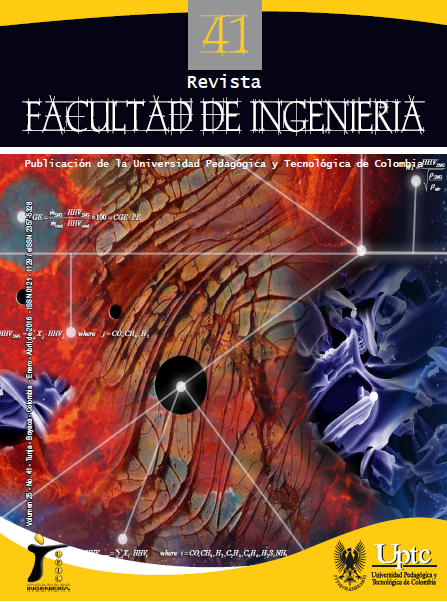Removal of lubricant added to iron powder metallurgy, with abnormal plasma discharge glow

Abstract
Abnormal glow discharge plasma is used in removing lubricant from iron powder metallurgical compact in a hydrogen atmosphere, in order to set the best conditions of thermal cycle in the cathodic configuration, to keep the iron characteristics offered. A rotary mixer for preparing the mixtures was used.
The material was conformed with uniaxial pressure and calculating its density and porosity. With TGA and DSC, the thermal decomposition and the elimination of the lubricant is studied. The removal cycles are performed on the abnormal glow discharge plasma. With TGA the lubricant removal is monitored. Green compacts and the removal process one’s are characterized using optical and SEM microscopy.
Adequate removal in the cathode configuration was achieved at 400 °C for 10 minutes. The proposed cycle should be considered for industrial applications due to high heating rates reached with reduced power consumption, and the energy required to maintain the discharge, related to the resistance furnaces used.
Keywords
iron powder metallurgy, DLA, powder metallurgy, plasma discharge glow
References
- S. Amstrong, M. D. Aesoph and A. L. Gurson, “The Effects of Lubricant Content and Relative Powder Density on the Elastic, Yield and Failure Behavior of a Compacted Metal Powder”, Advances in Powder Metall, Metal Powders Industries Federation, vol. 3, pp. 31, 1995.
- M. Ward, “Influence of Lubricants on Dimensional Changes and Mechanical Properties of Sintered Ferrous Compacts”, Powder Metall. IoM Communications, no. 4, pp. 193, 1979. DOI: https://doi.org/10.1179/pom.1979.22.4.193
- A. I. Lawrence et al., “A performance Comparison of Current P/M Lubricants and Routes to Improvement”, Advances in Powder Metall, Compiled by C. Lall and A.J. Neupaver, Metal Powders Industries Federation, vol. 3, pp. 103, 1997.
- Hoeganaes Corporation, Data Sheet: Ancorsteel 1000, pp. 1-5, 0613-AS1000-D-2.
- Hogänäs AB., Materials and Powders Properties, PoP Application Center of Hogänäs, Handbook No. 1, Chapter 1, 2007.
- Hogänäs AB., Compacting of Metal Powders, PM School, Handbook No. 2, Chapter 4 and Chapter 6, 2007.
- A. Bolarín et al., Análisis Termogravimétrico del Proceso de Eliminación de Lubricante en Compactos P/M”, Centro de Investigaciones de Materiales y Metalurgia - Universidad Autónoma del Estado de Hidalgo (UAEH), Universidad Autónoma de Coahuila, México, 2015.
- M. Ward, “Decomposition Characteristics of some lubricants in iron P/M compacts as a free compounds”, Int. J. Powder Metallurgy and Powder Tech, vol. 3, no. 3, pp. 197, 1977.
- Kuen-Shyang and Li Kuang-Hung, “Lubricant Removal in Metal Powder Compacts”, The International Journal of Power Metallurgy, Vol. 28, no. 4, 1992.
- A. Sarmiento S. y J. L. R. Muzart, “Tratamiento de Acero 316L en Descarga Luminiscente Anormal”, Revista Colombiana de Física, vol. 40, no. 2, pp. 427-429, julio 2008.
- J. L. R. Muzart et al. Advances in Powder Metallurgy & Particulate Materials, part. 3, pp. 77-84, 1997.
- D. Saha and D. Apelian, “Control Strategy for De-lubrication of P/M Compacts”, The International Journal of Powder Metallurgy, Vol. 38, no. 3, pp. 5-7, 13-15, 17-21, 2002.
- G. Randall M., Powder Metallurgy Science, 2th ed., Princeton, New Jersey, U.S.A., Metal Powder Industries Federation, 1994.
- Struktol Company of America, Technical Data.
- Arnaud Gateaud, Physical and Chemical Mechanisms of Lubricant Removal During Stage I of the Sintering Process, Directores: Diran Apelian, Richard D. Sisson, Thesis Degree of Master of Science in Materials Science and Engineering, Worcester Polytechnic Institute, 2006.
- D. Saha, De-lubrication during Sintering of P/M Compacts: Operative Mechanism and Process Control Strategy, Directores: D. Apelian, Richard D. Sisson, Thesis Degree of Master of Science in Materials Science and Engineering, Worcester Polytechnic Institute, pp. 5, 2001.
- E. Hryha et al., “Influence of the Steel Powder Type and Processing Parameters on the Debinding of PM Compacts with Gelatin Binder”, Journal of Thermal Analysis and Calorimetry, Vol. 118, Issue 2, pp. 695, november 2014. DOI: http://dx.doi.org/10.1007/s10973-014- DOI: https://doi.org/10.1007/s10973-014-3839-7
- -7.